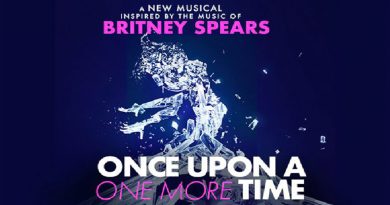The Dawn of the AI Age: Transforming Live Performances and Storytelling
As we find ourselves amidst a whirlwind of technological advancements, it is indisputable that the world of Australian theatre is poised to undergo a significant transformation. The harbinger of this change is artificial intelligence (AI), poised to revolutionise live performances and storytelling, altering the way we create, perceive, and interact with this art form.
It’s hard to ignore the role that AI has already played in an array of sectors: from self-driving vehicles to personalised online shopping experiences, AI’s footprint is increasingly visible. The theatre, this bastion of human emotion and interaction, may seem an unlikely candidate for such a technological intrusion. Yet, the possibilities are intriguing and, as we’ll uncover, potentially transformative.
Firstly, let’s consider the creation and development of performances. Traditionally, script-writing and character development has remained firmly in the hands of humans. Yet AI, armed with complex algorithms and machine learning, has demonstrated an ability to draft scripts and generate original content. From initial stage directions to intricate dialogue, machines are beginning to master the art of storytelling.
This doesn’t spell the end for human writers and dramaturges; rather, it opens up new avenues of collaboration. AI can generate vast amounts of content quickly, providing a basis for human creators to refine and infuse with emotional depth. This symbiosis could accelerate the creative process, and potentially yield unexpected and innovative narratives.
In terms of performance, AI offers a unique set of tools. Technologies such as holography and augmented reality (AR) can enhance live performances, creating immersive experiences previously impossible. Imagine actors interacting with AI-driven holograms, or spectators using AR glasses to see virtual sets and special effects seamlessly integrated into the real-world stage.
Furthermore, AI-powered motion capture technology could aid in creating realistic non-human characters. Rather than relying solely on costume design and human movement, AI could analyse and replicate the movements of animals, mythical creatures, or fantastical beings, breathing life into unique characters in a more convincing way.
Audience engagement is another area where AI can shine. Interactive performances, where the narrative evolves based on audience reactions, could be made possible through real-time data analysis. AI could gauge audience engagement and emotions, and adjust the performance dynamically, leading to a truly unique and personalised theatre experience.
Despite these exciting prospects, we should tread with caution. AI, for all its potential, should not eclipse the human touch that remains central to theatre. After all, the raw human emotion, the delicate nuances of a performance, and the shared experience of a live audience cannot be replicated by algorithms.
Artificial intelligence (AI) indeed holds transformative potential for the theatre industry. While it is critical to remember that AI is a tool meant to assist rather than replace humans, certain roles could become less human-centric or may require adaptation due to AI.
Scriptwriting: As AI evolves, it’s getting better at generating coherent and engaging narratives. Some aspects of scriptwriting could be automated, particularly for drafting preliminary versions or generating ideas. However, the emotional depth, cultural context, and nuanced character development that human scriptwriters bring to the table would still be essential.
Set Design: With AI’s capabilities in 3D modelling and rendering, it could partially take over the role of set designers, especially in the early stages of conceptualising and visualising the set. Nevertheless, the aesthetic judgement and cultural sensitivity of human designers remain irreplaceable.
Lighting and Sound Technician: The use of AI in managing lighting and sound systems could reduce the need for manual operation. AI systems can be programmed to follow the script and cues, adjusting lights and sound dynamically during a performance.
Box Office Staff: Ticketing, seat assignments, and other administrative tasks are already being automated in many theatres. As AI and machine learning improve, this trend is likely to continue, potentially reducing the need for human box office staff.
Promotion and Marketing: AI’s capacity to analyse vast amounts of data can be instrumental in targeted advertising and creating personalised marketing campaigns. This could shift the role of marketing teams, or potentially reduce the need for larger marketing departments.
Choreography: AI, when paired with motion capture technology, could aid in choreography by analysing and suggesting movement patterns. However, the creative and emotional aspect of choreography would still heavily rely on human input.
These changes, while potentially disruptive, can also open up new roles and opportunities within the industry. For example, we’ll need AI specialists and technicians who understand theatre, data analysts to interpret audience engagement, and human-AI interaction designers. It’s a shift in the industry, and those who adapt will likely find themselves with exciting new prospects.



